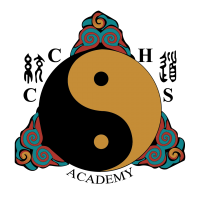Introduction to Acupuncture Physical Medicine Dr. Anthony Von der Muhll, L.Ac., DAOM, DNBAO, FAIPM
Introduction to Acupuncture Physical Medicine
The Academy of Chinese Culture and Health Science
Category 1 CA CEU’s: 8 CEUs (pending)
Instructor: Dr. Anthony Von der Muhll,
L.Ac., DAOM, DNBAO, FAIPM
Dr. Anthony Von der Muhll specializes in sports, orthopedic and neuro-musculoskeletal injuries and pain conditions. He became Licensed as an Acupuncturist in 2003, and was the first graduate of the Five Branches University’s’ Integrative Sports Medicine program. He has served as a Clinical Instructor and Associate Professor at the Five Branches since 2005, and as an Instructor in the Doctorate of Acupuncture and Oriental Medicine Program of the Academy of Chinese Culture and Health Sciences beginning in 2017. He is also a Diplomate of the National Board of Acupuncture Orthopedics, a Fellow of the American Academy of Pain Management, and certified as a Personal Trainer through the American College of Sports Medicine. He is also one of the few traditionally-trained acupuncturists who has also become certified as a Myofascial Trigger Point Therapist (dry needling) through Myopain Seminars. He has 20 years of clinical experience as a sports massage therapist, physical therapy aide, athletic training assistant, and licensed acupuncturist in multi-disciplinary clinics, including SpineMed Associates and the PRIME Pain Medicine Institute. He has also served as an Expert Witness for the California Acupuncture Board (CAB) and in civil malpractice litigation.
December 10, 2021-December 10, 2021 9:00 AM-6:00 PM
8 Category 1 CAB units available
Type: Online Via Livestream or Recorded Lectures
Description:
Neck and shoulder injuries and pain serve as a clinical example to demonstrate theory, principles, modalities and techniques of acupuncture orthopedics.
- Overview of acupuncture orthopedics: integrating Eastern and Western understandings of injuries, pain and disability
- From acute injury to chronic pain and disability: bi syndromes and the degenerative cascade
- Challenges, standards and goals for treating injuries, pain and disability
- Moving beyond passive symptom relief to active restoration of functional capacity
- Resources for developing essential knowledge, skills and abilities
- Pain psychology and neural hypersensitivity: recognizing and treating hidden mind-body pathomechanisms of chronic pain and disability
- Optimal treatment of orthopedic tissues
- Bones, joints, muscles, tendons, ligaments: selecting the best AOM treatment modalities
- Kinesiology and the jing-jin (“sinew channels”): understanding posture and motion disorders
- The orthopedic interview: taking an effective history
- Objectives, challenges, priorities, structure and flow
- Key questions for assessing severity/urgency and focusing physical exam
- Essential inquiry for diagnosis and pattern recognition
- Interview techniques to build patient rapport and a strong therapeutic alliance
Course Objectives:
Review principles and best practices for orthopedic history-taking, physical exam, diagnosis, and treatment.
